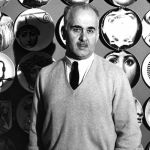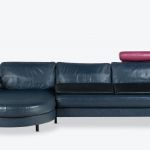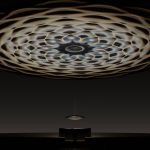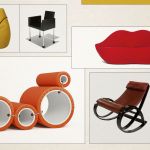
5 designers who have shaped the history of Milan
Gio Ponti, Achille Castiglioni, Piero Formasetti, Cini Boeri e Antonio Citteri
April 5th, 2019
Milan has always been sort of the vital laboratory of Italian creativity. It is the city that has seen the rising of design giants such as Sottsass, the Castiglioni brothers, Munari, Magistretti, Fornasetti, Ponti, Boeri, Branzi and Mendini.
Now that Milan Design Week is about to begin, from 9 to 14 April, the city will offer the most interesting projects proposed by talents from all over the world, which will be, even if for a few days a catalyzation of unique ideas, installations, art and innovations. nss gives you a mini-guide in preparation for the event even in the case where you are not a design expert, telling you what you need to know about the 5 designers who have helped make the history of Milan.
Gio Ponti

Who he is and what he did
Architect, designer, set designer, essayist and founder of the Domus magazine, Giovanni Ponti, known as Gio, studied at the Milan Polytechnic and began his career in 1923 as artistic director of the Richard-Ginori ceramics factory. Here he begins to experiment in an innovative way the mixture of classical art, new materials and avant-garde techniques that will become one of the distinctive features of his work. Not aligned with the academic and official architectural culture, it leaves its multifaceted talent free to wander between the arts, always maintaining a luminous, rational, linear, sophisticated and at the same time modern taste. If the Pirelli skyscraper (or Pirellone) in Milan is considered his architectural masterpiece, his foray into design is full of happy collaborations. Ponti invents the first coffee machine produced by the Pavoni brand, creates cutlery lines for Sabattini, designs interiors and furnishings with Piero Fornasetti, creates the iconic Superleggera chair for Cassina and the first to create the “wall system”, the wall of shelves and lockers that we still see today in many stays. Among the many projects we remember the lamps for FontanaArte: Bilia, composed of a sphere and a cone; the Pirellone floor lamp, inspired by the shape of the skyscraper, formed by two curved glass plates stopped by metal elements at the base and at the top; 0024, a chromed brass structure with a succession of transparent glass disks and a central cylindrical diffuser in sandblasted glass.
Iconic item: the Superleggera chair for Cassina
"A chair - chair, without adjectives."
This is what Gio Ponti stubbornly wants to achieve with the 699 project created for Cassina. Inspired by the typical straw chair of Chiavari (his birthplace), after eight years of research and experimentation he manages to get the definitive prototype: backrest in ash wood specially curved to accommodate the body, sitting in a cane and a triangular section of only 18 millimeters which, together with the study of the joints, gives the chair strength and lightness. He calls it Superleggera because with its 1700 grams it is so thin that it can be lifted with just one finger. In 1952 he made his debut at the Milan Triennale, enjoying great success for his simplicity and eventually establishing himself as one of the most famous industrial design objects in history.
Fan fact: It is said that to test its robustness it was thrown from the fourth floor of a building and, instead of breaking, it bounced off.
Achille Castiglioni

Who he is and what he did
With a sculptor father and three brothers, Livio, Pier Giacomo and Achille, archi-designer we can say that creativity flows in the veins of the Castiglioni family. Creativity in Achilles so explosive that it is estimated that in over 40 years of activity Castiglioni has created 190 architectural projects, 290 industrial design projects and 484 installations. His philosophy is simple and ingenious at the same time: transforming ordinary forms into design projects with elegant, unusual and functional aesthetics. Together with his brother Pier Giacomo and alone he continually experimented with shapes and materials, distorting common objects with an almost Dadaist attitude. Perfect examples of this approach are the plastic seat of a tractor becomes the Mezzadro stool; the saddle of a bicycle transformed into the Sella tilting seat; the eye-catching Toio lamp formed with the headlight of a car and a live wire taken from a fishing rod. In every object created, Castiglioni combines expressiveness and functionality with research on technologies and materials. Never forgetting practicality and a touch of irony.
Iconic item: the Arco lamp for Flos
“Arco is a synthesis of elegance, genius and simplicity. An object that does not add up, but multiplies the initial value - economic, aesthetic and symbolic - of the three objects that it assembles, creating something new”.
This is what architect Stefano Boeri writes in his book Making more with less praising the famous lamp designed by Pier Giacomo and Achille Castiglioni in 1962 for the Flos company. This new concept of light, suspended lighting from above without the need to fix it to the ceiling, soon becomes an icon of Made in Italy. Inspired by old street lamps, Arco is composed of a parallelepiped in white Carrara marble with a hole (just insert the handle of a broom to lift and move the base easily) and three curved sections of steel on whose end is the light point housing, consisting of a perforated dome and an adjustable aluminum ring.
Fun fact: the Arco lamp is the first object of industrial design in Italy to which copyright protection was recognized occurred for works of art.
Piero Fornasetti
![]()

Who he is and what he did
Born in Milan in 1913, Fornasetti studied at the Brera Academy but was expelled for indiscipline, yet he immediately began to exhibit his works. The scarves printed on silk created by him attract the attention of Gio Ponti, with whom he began a long collaboration. Banned the rational and minimalist forms in vogue at that time, he is inspired by old books and magazines, nurturing his dreamlike universe populated by surreal creatures. If as a child he draws hot air balloons on the ceiling of the bedroom, then adult transform everyday objects into works of art by decorating them with fish, butterflies, shells, fruit, playing cards, musical instruments, astrological symbols, masks, hands and the face of a woman who obsessively reproduced in over 500 variants. It seems that this "dandy artisan and artist", as his colleague Andrea Branzi called it, has created over eleven thousand objects, including plates, vases, trays, chairs, tables, chandeliers, bicycles, calendars, wallpapers, buttons and other objects newspapers.
Iconic item: the Tema e Variazioni series
The multiplication of an obsession started as a series of 6 dishes has increased over the years to reach over 350 variations, spreading over every type of object. The absolute protagonist is the face of Lina Cavalieri, an opera singer who lived between the 19th and 20th centuries, known at the time as the most beautiful woman in the world. The first time Fornasetti sees it by leafing through a French magazine and remains so bewitched to say:
"The face of Lina Cavalieri is a true archetype: the quintessence of an image of classical beauty, like a Greek statue, enigmatic like the Mona Lisa. What inspires me to make over 500 variations on a woman's face? I do not know. I started doing them, and I never stopped."
Fun fact: Gabriele d'Annunzio dedicated a copy of the novel The pleasure to Lina Cavalieri calling it the maximum testimony of Venus on Earth and Henry Miller chose it as the cover of his autobiography My Life and Times.
Cini Boeri ![]()

Who she is and what she did
A graduate of Milan Polytechnic and an apprentice of Gio Ponti, Boeri opened her architectural firm in 1963 where she designed houses, villas, apartments, in Italy and abroad. Her favorite? La Casa Bunker at Maddalena of 1967: four independent rooms, each with its own bathroom and its exit to the sea, distributed around a living room and kitchen. This extremely functionalist vision, attentive to customer needs and flexibility in solutions, is the same that we find in her work in industrial design. The other peculiarity of his projects is the experimentation of new materials. The Strips line for Arflex, a translation of the sleeping bag in furniture obtained by mounting a non-deformable, quilted and completely removable cover in polyurethane foam on a wooden structure, won the golden compass in 1979. They remain in the history of design too the Lunario table for Knoll and Boborelax, one of the first examples of a monoblock chair with an almost pop mood completely in polyurethane foam without an internal supporting structure.
Iconic item: the Ghost armchair for FIAM
Designed by Boeri in 1987, Ghost has become a classic of contemporary design enough to be exhibited in the most prestigious museums in the world such as the MoMA in New York. The armchair is completely transparent and made entirely of curved glass, a single sheet of 12 mm thick glass that, folded and baked with a high-pressure water jet, forms the seat, the armrests and the backrest. Characterized by sinuous lines and transparency that allows light to filter through making it become a sort of ghost, this unique object is considered "a perfect synthesis of technological experimentation and formal research".
Antonio Citterio

Who he is and what he did
Born in Meda in 1950, trained in an art institute and graduated in Architecture at the Milan Polytechnic in 1975, he is the partnership with B&B Italia that allows him to make himself known. His first project is a roll-up mattress that becomes an armchair, while one of the most famous is the totally recyclable Visavis Softback office chair by Vitra, created thanks to a particular weld taken from the bicycle world. Also interesting are his tributes to the great designers of the past like Ray and armchairs, the Eileen table or the Charles sofa that mentions Charles Eames. His gentle and elegant vision of the object gives him the nickname of a gentleman of design.
Iconic item: Sity Sofa for B&B Italia

"A courageous step forward in the search for a system to sit composed of flexible and separable structures, able to reorganize today's complex life scenario".
With this phrase, B&B underlines the importance of the sofa created by Citterio in 1986, able to adapt to the new complexity of the living landscape of that decade and to claim the multi-functionality of furniture previously relegated to an object of representation. Sity is a flexible, flexible and modular structure based on some central elements, including a straight sofa, a curved version and a chaise longue and another twenty pieces, including a bed, which can be added to request to the core team. For this creation, Citterio wins the prestigious Golden Compass.






























































































































































































